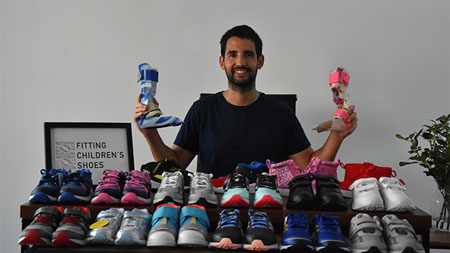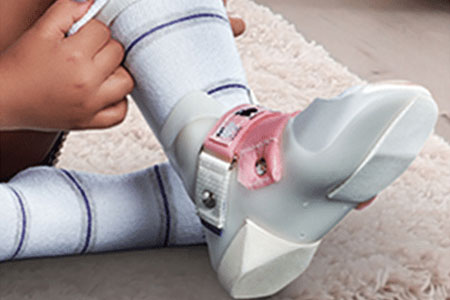Are Your Kids’ AFO Braces Causing Blisters? – Try Padding and Cushion
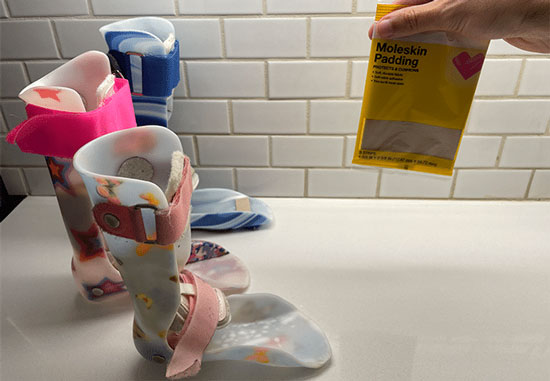
Has your child developed blisters from wearing AFOs/SMOs? Did you know that children who wear AFOs are more prone to developing blisters on their feet? AFOs are made of rigid plastic and are the type of orthotic that causes most blisters among children. I have noticed that AFOs provide more effective biomechanics correction because they fit more intimately than other orthotics, but this can lead to an increase in the incidence of skin issues on your child’s feet.
Skin Issues From Wearing AFOs
I have seen a lot of skin issues related to AFOs. Pressure issues, sores, and abrasions usually occur when the AFOs don’t fit correctly inside the shoes or when the child doesn’t wear the correct types of socks. However, if your child developed a blister, your first step should be to make an appointment with the orthotist to check whether the AFOs need to be adjusted.
While you wait for that appointment, there are things you can do so your child can continue to wear the AFO.
What to Do When Children Develop Blisters from Wearing AFOs?
There is one effective method you can try to cushion and pad the AFO area that is causing your child’s blisters. If you can identify the area of the AFO that might be causing the blisters you can apply moleskin in that area to cushion and protect your child’s feet. For example, one common place children who wear AFOs develop blisters is around their heels:
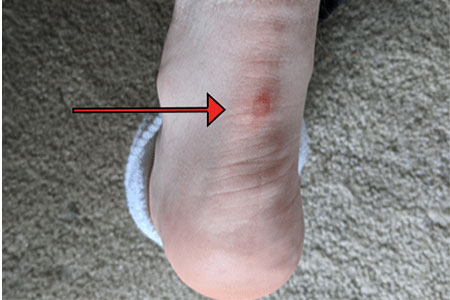
In this case, you can place a piece of moleskin around the heel area of the AFO to reduce some of the friction between your child’s heels and the AFOs:

Another common place children develop blisters is on the sides of their feet:
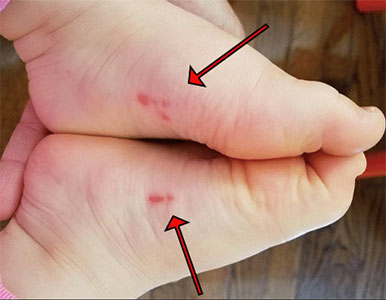
In this case, you can apply the moleskin around the side of the AFO footplate:

You can get moleskin at your local shop or if you prefer to shop online you can use the link below:

- Order the RadBizz Extra Durable Moleskin Patches by FirstChoice on Amazon
Shoes and Socks Play a Big Role in Preventing Blisters
Parents need to know that they can provide their children with the best-fitting AFO, but if the AFOs don’t fit correctly inside the shoes it basically negates all of the benefits that the AFOs have to offer.
1st Step: Make Sure Your Kids’ Shoes are the Correct Size
Shoes that are too big can allow for too much foot movement inside the shoes, and that constant rubbing and friction between the feet and the AFOs can lead to blisters. There is a different resource I created that helps families determine whether their child is wearing the correct shoe size with the AFOs.
2nd Step: Make Sure Your Child is Wearing the Correct Types of Socks
Certain socks are made specifically for children who wear AFOs, and these socks help provide your child with protection and comfort.
Socks are really important because they act as a barrier between your child’s feet and the AFOs. They also need to be breathable to prevent your child’s feet from sweating excessively, as this makes the skin more prone to developing blisters. You also need to make sure that you order the socks in the correct size as socks that have wrinkles or creases can create pressure points on your child’s skin.
Do not hesitate to contact me if you have any questions about your child’s shoes or AFOs: fittingchildrensshoes@gmail.com
Other factors that might be causing your child’s blisters and skin irritations:
- Change in body shape (growth, tonal fluctuations, changes in ankle/foot alignment)
- Poorly dried skin
Prevention is really the key when it comes to blisters. You can share your feedback in the comments section below.

